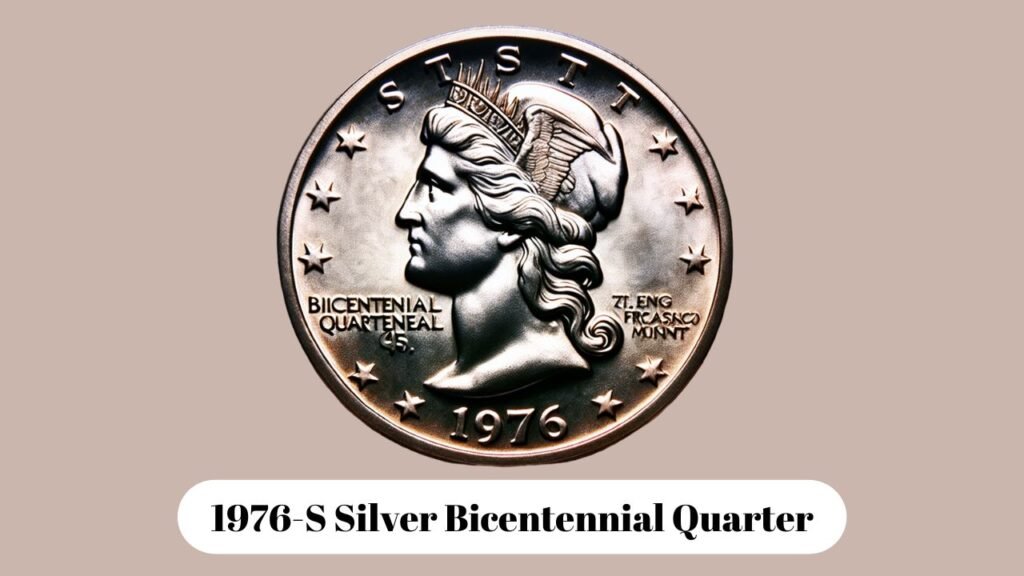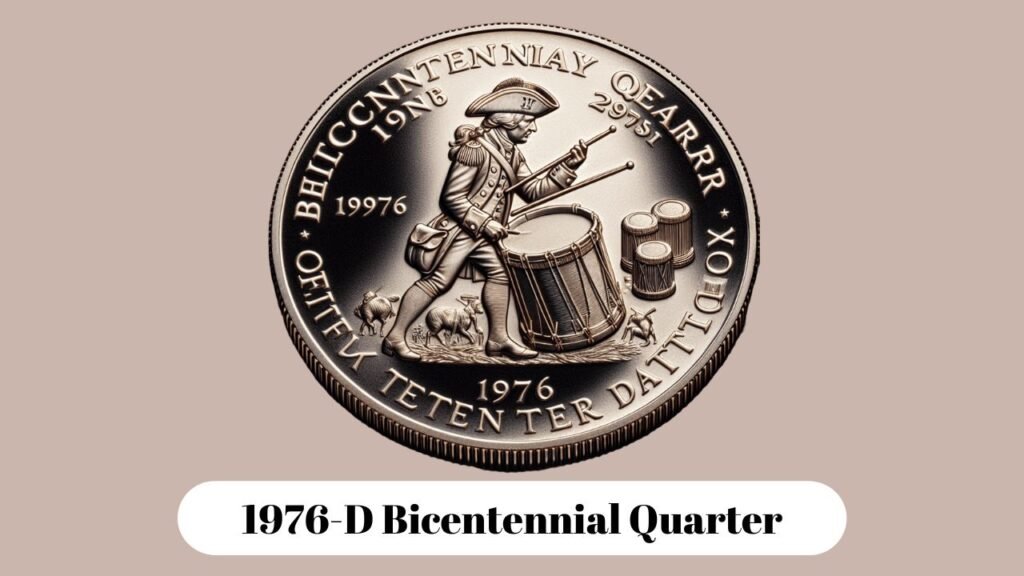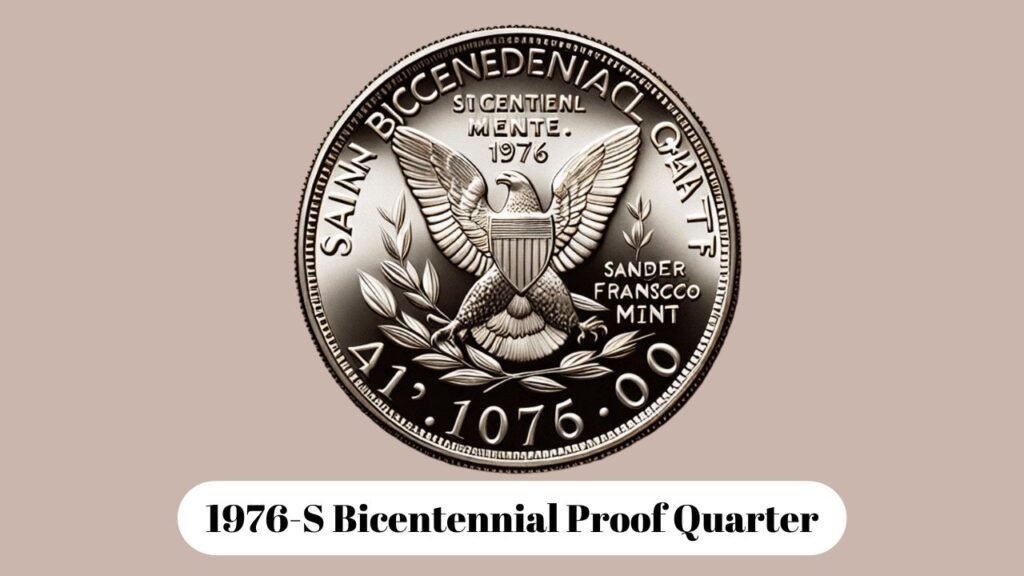Introduction
Have you ever wondered if that jingling quarter in your pocket could be worth thousands? Bicentennial Quarterly might just be your ticket to unexpected fun. While most of these commemorative coins circulate as regular pocket change, certain rare cards can fetch up to $15,000 at auction.
Built in 1975 and 1976 to celebrate America’s 200th birthday, these special buildings caught the attention of collectors worldwide. The thrill of having four hundred years worth in your change jar is real – imagine finding thousands of dollars when doing your weekly grocery shopping!
Let’s explore the extraordinary bicentennials that stand out for their incredible value and rarity. These are not just pieces of metal; They are treasures of American history that can be kept in plain sight.
Understanding the Bicentennial Quarter
The United States celebrated 200 years of independence in 1976 with a special quarterly commemoration program. The U.S. was started. mint in 1975, and these four spots are marked with two dates, “1776-1976,” instead of one year.
These special rooms have a Colonial violinist in the background, designed by Jack L. Ahr through a nationwide design competition. The drummer faces left, surrounded by 13 stars representing the original colonies. This design replaced the traditional lobster found in the usual places.
Types of Bicentennial Quarters
The Bicentennial Quarterly included:
- Routine Trade: Copper-Nickel Casing Composition
- 40% Silver Edition: Special Collectors Edition
- Proof set: a glass-like finish for collectors
Mint Locations and Production Numbers
U.S. The Mint produced these four spots in three locations.
- Philadelphia (no mintmark)
- Denver (D mint mark)
- San Francisco (S mint mark)
Production reached approximately 1.7 billion throughout the revolutions, breaking the norm for two centuries. However, certain types, especially those with mint defects or unique features, command higher prices in today’s market.
1. 1976-S Silver Bicentennial Quarter ($15,000)

The 1976-S Silver Tricentennial is a prime example of the San Francisco Mint’s coin excellence. This rare form has a silver content of 40%, setting it apart from typical copper-nickel plated surfaces of the same period. U.S. The mint produced these unique silver specimens in limited quantities, with a total coinage of just 11 million pieces – a fraction compared to a regular rotating workforce
Recent auction data reveals incredible value for this incredible coin:
- MS-65 Course: $2,500 – $5,000
- MS-67 Course: $8,000 – $12,000
- MS-68 award: $15,000+
Demand from collectors for the 1976-S Silver Zone continues to grow, driven by historical significance and immaculate preservation. Coins found in exceptional condition are much more valuable, and certified MS-68 specimens command higher prices at wholesale auctions
These areas have unusually deep cameo contrasts and sharp characteristics – the “S” mint mark, which is the hallmark of the San Francisco Mint’s finest workmanship, is clearly visible below the Colonial drummer on the reverse.
2. 1976-D Bicentennial Quarter without “D” Mint Mark ($25,000)

Except for the “D” mint mark, the 1976-D bicentennial is probably one of the most intriguing miniatures in the United States of America-one of the greatest fundraisers of all time. It’s a rare edition, more so since the Denver Mint struck coins without the “D” mint mark just to create this attraction among collectors.
Key Characteristics:
- Mint mark “D” with bottom date missing
- standard copper-nickel alloys
- Regular weight 5.67 grams
- Authentic Denver Mint wrestling example
The missing mint mark was due to a manufacturing error in which the die marked “D” had not been properly prepared. This fault has given rise to very few of these quadrants, and only a few have been found to exist today.
At recent market values, certified prototypes are worth $25,000 or more, depending on condition. The rarity of these error coins sustains their significant value, as collectors actively seek out these pieces to complete their quarterly bicentennial collections involvement that is evidenced by only a few examples, making this form a particular favorite in the fundraising category.
3. 1976-S Bicentennial Proof Quarter (High Grades)

The 1976-S bicentennial size quarter is a truly impressive coinage. Unlike regular coins, certificate coins go through a special production process that requires repeated strokes of polished dies on specially prepared blanks. This refined technique produces coins with a shiny, frosted background.
Key Features of the 1976-S Proof Quarter
The 1976-S Proof Quarter has many unique distinguishing features.
- mirror-like external elements
- Sharp and cold relief issues
- Pristine quality
- “S” mint mark indicates early San Francisco
These four areas are highly sought after by collectors and can command high prices when kept in good condition (PR-68 to PR-70). In fact, a perfect PR-70 specimen has the potential to sell for $15,000 or more at auction, especially if it’s certified through a reputable grading service like PCGS or NGC.
Value Breakdown by Grade Quality
The value of these four areas of certification varies widely depending on their grade quality:
- PR-65: $100-200
- PR-67: $500-1,000
- PR-69: $5,000-10,000
- PR-70: $15,000+
This coin is highly prized by collectors not only for its historical significance, but also for its uniqueness and beauty. The combination of bicentennial design and proof finishes creates a visually stunning product that represents both American heritage and monetary excellence.
Additional Noteworthy Variants to Look Out For
The world of valuable sites extends beyond the Bicentennial Series. The 1932-D Washington Quarter stands as a prime example, commanding prices up to $20,000 in mint condition.
Collectors offer prizes for a few other notable looks:
- Double Die Error Stamps – These rare examples feature distinct doubles in the design elements, especially noticeable in lettering and dates
- Off-Center Strikes – Quarters with unlined strikes can carry a premium price
- Incorrect Planchet Error – Quarters played on dime or nickel blanks are special collectibles
A 1937 Washington Quarter with two die fronts and a 1950-D/S Washington Quarter represent other treasures worth seeing. These types tend to trade in major auctions, attracting a lot of interest from serious collectors.
Conclusion
Fundraising makes it even more exciting by looking for two centuries of value. Your new change could be a $15,000 savings in cash – but it’s important to stay realistic. While some rarities like the 1976-S silver piece or the hard-to-find 1976-D without the mint mark can drive up prices, most Bicentennial quarters are worth very little
Take the time to look into your finances. Each piece in your collection has a history of America, and you would be surprised at some of the hidden treasures found within your collection. That sense of finding something new can complete a collection at any price. Take some time to learn, travel and talk to collectors. That rare find could be only a quarter of a mile down the road.
FAQ’s
What is the significance of the two centuries?
Built between 1975 and 1976, the Bicentennial Quarter celebrates America’s 200th anniversary. Its unique design sets it apart from the usual destinations and makes it an attractive collector for gold enthusiasts.
Why is the 1976-S Silver Triennial So Valuable?
The 1976-S Silver Bicentennial Quarter is highly prized for its silver content and limited design. Depending on condition and collector demand, it could fetch up to $15,000.
How do you identify the 1976-D Bicentennial Quarter without the ‘D’ mint mark?
The 1976-D Bicentennial Quarter is considered an error coin without the ‘D’ mint mark. This rare style differs from the standard third-year 1976-D model, which contributes to its high market value, which can reach $25,000.
What is testimonial money and how does it relate to the bicentennial?
They are special certification coins for high end finish collectors. The 1976-S Bicentennial proof quarter is noteworthy for its unique quality and can show value based on its condition and rarity in the proof class.

